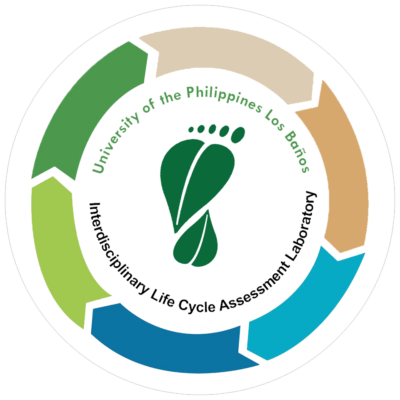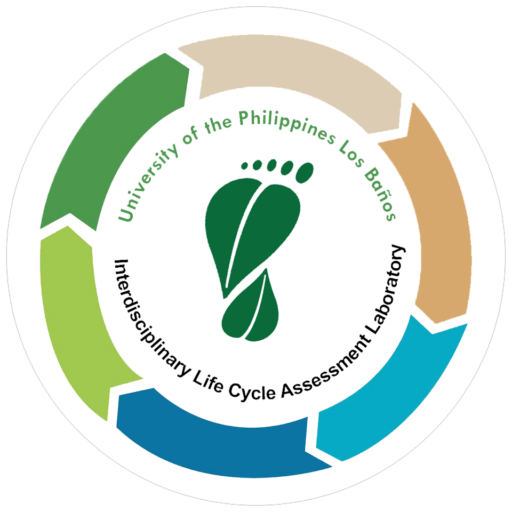Life Cycle Assessment (LCA) is a vital tool for evaluating the environmental impact of products, processes, and systems throughout their entire life cycle. In the era where sustainability is at the forefront of global concerns, understanding LCA is essential. It allows us to make informed decisions, reduce our carbon footprint, and contribute to a more environmentally conscious world.
The holistic approach of a Life Cycle Assessment allows businesses, policymakers, and consumers to make informed decisions that promote sustainability and reduce their ecological footprint. By identifying areas of improvement, LCA helps optimize resource use, minimize waste, and support eco-friendly practices, ultimately contributing to a greener and more sustainable future for our planet. Understanding the purpose and significance of LCA is key to making responsible choices that benefit both our environment and society.
ILCAL – With local LCA Practitioners housed in the University of the Philippines Los Baños.
Why UPLB ILCAL Is Your LCA Destination of Choice:
- Interdisciplinary Brilliance: UPLB ILCAL thrives on the synergistic collaboration of experts from varied domains. This collaborative prowess ensures a holistic and multifaceted approach to LCA that transcends conventional boundaries.
- Local Insight: Dr. Rex Demafelis and our team are intimately acquainted with the nuanced intricacies of the Philippines. We specialize in crafting sustainable solutions tailored to align seamlessly with the local context.
- Proven Excellence: With a rich track record of orchestrating successful LCA ventures spanning numerous sectors, we stand as an emblem of proficiency in guiding your odyssey towards sustainability.
- Leading-Edge Research: At UPLB ILCAL, we are not content with the status quo. We lead the charge in pioneering LCA research, employing cutting-edge methodologies and tools to deliver precise, data-driven insights.
- Collaborative Ethos: We fervently believe in the power of partnership. Collaborate with us to co-create bespoke LCA strategies harmonized precisely with your objectives, ultimately contributing to a more sustainable Philippines.
- Greening Your Endeavors: Whether your enterprise lies in agriculture, manufacturing, or any other sector, UPLB ILCAL empowers you to curtail your environmental footprint, optimize resource utilization, and fortify your eco-conscious credentials.
Historical Background
The concept of Life Cycle Assessment (LCA) has evolved over time, with its origins dating back to the mid-20th century. Here’s a brief historical overview of the development of LCA:
- The environmental movement began gaining momentum during the 1960s, with concerns about pollution and resource depletion coming to the forefront.
- This era marked the early recognition of the need to assess the environmental impacts of products and processes.
- During the 1970s, the concept of Environmental Impact Assessment (EIA) gained popularity, focusing primarily on the impacts of specific projects and developments.
- Researchers and policymakers realized that environmental considerations should extend beyond individual projects to encompass the entire life cycle of products and processes.
- The term “Life Cycle Assessment” (LCA) was coined in the 1980s as a structured methodology for evaluating the environmental aspects and potential impacts associated with a product or system.
- Swedish researchers, notably C. J. Wesnæs and others, played a significant role in shaping the early principles and methodologies of LCA.
- During the 1990s, LCA methodology started to become more standardized and refined, making it a valuable tool for industry and policy development.
- Organizations like the Society of Environmental Toxicology and Chemistry (SETAC) and the International Organization for Standardization (ISO) began developing guidelines and standards for LCA.
- LCA gained international recognition and began to be applied in various industries worldwide.
- The 21st century witnessed a rapid integration of LCA into mainstream sustainability practices.
- LCA software tools and databases expanded, making it more accessible to a broader audience.
- Governments, businesses, and NGOs increasingly adopted LCA as a decision-making tool to assess and reduce environmental impacts across diverse sectors, from manufacturing and agriculture to energy and transportation.
Today, Life Cycle Assessment is a well-established and widely recognized methodology that continues to evolve and adapt to the growing global emphasis on sustainability and environmental responsibility. Its historical development reflects a growing awareness of the importance of holistic environmental evaluation in our efforts to create a more sustainable world.
Why is LCA important in the Philippines?
Life Cycle Assessment (LCA) holds paramount importance in the Philippines, particularly in the context of Environmental, Social, and Governance (ESG) considerations and the regulatory requirements set forth by the Securities and Exchange Commission (SEC) and the Bangko Sentral ng Pilipinas (BSP):
Regulatory Compliance and Reporting:
• LCA provides a structured framework for assessing the environmental aspects of a company's operations, which is crucial for ESG reporting compliance.
Enhancing Corporate Governance:
• LCA can help companies identify areas where governance practices can be improved, especially concerning environmental stewardship and sustainability.
Sustainable Finance and Green Banking:
• LCA is instrumental in assessing the environmental impact of loans and investments, enabling banks to evaluate the greenness of their portfolios and identify opportunities for sustainable finance.
Assessing Climate Risks:
• LCA helps businesses and financial institutions assess climate-related risks and formulate strategies for resilience and adaptation.
Sustainable Investment Decisions:
• This empowers investors to allocate capital to projects and companies that align with sustainable and responsible business practices.
Sustainable Development Goals (SDGs):
• LCA supports progress toward these goals by facilitating the identification of sustainable practices and projects that contribute to economic, environmental, and social objectives.
Environmental Responsibility and Accountability:
• It helps organizations fulfill their environmental responsibilities and demonstrate their commitment to sustainability.
In summary, the importance of Life Cycle Assessment in the Philippines is underscored by its role in supporting ESG reporting compliance, promoting green banking practices mandated by the BSP, and contributing to sustainable development in line with regulatory requirements and global sustainability initiatives. By adopting LCA, businesses and financial institutions can enhance their environmental responsibility and contribute to a more sustainable and resilient future in the Philippines.
Contents
- Goal and scope definition
- Life cycle inventory (LCI)
- Life cycle impact assessment (LCIA)
- Interpretation
- System boundaries
- Functional unit
- Life cycle stages (cradle-to-grave, cradle-to-gate, etc.)
- Environmental indicators
- Attributional vs. consequential LCA
- Input-Output LCA
- Process-based LCA
- Primary data vs. secondary data
- Data quality and uncertainty
- Life cycle inventory databases
- Product design and development
- Environmental labeling and certifications
- Policy and regulation development
- Supply chain optimization
- Carbon footprint assessment
- Data availability and quality
- System boundaries and scope
- Complexity and resource intensity
- Interpretation and decision-making
- Examples of LCA in action across various industries (e.g., automotive, food, electronics)
- Environmental benefits
- Economic benefits
- Social benefits
- Integration with emerging technologies (e.g., AI, blockchain)
- Expanded scope and application
- Standardization and data transparency
- Tools and software
- LCA practitioners and consultants
- Educational resources
- Recap of the importance of LCA
- Encouragement for individuals and businesses to adopt LCA practices

